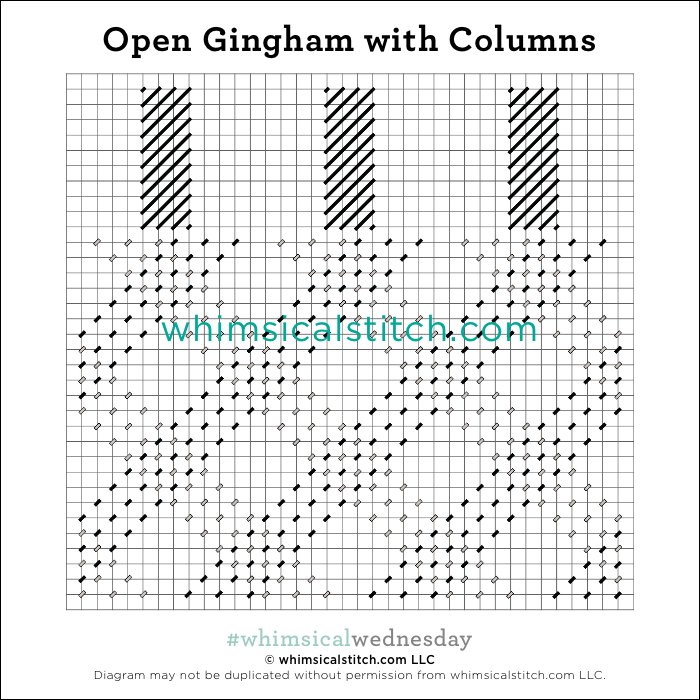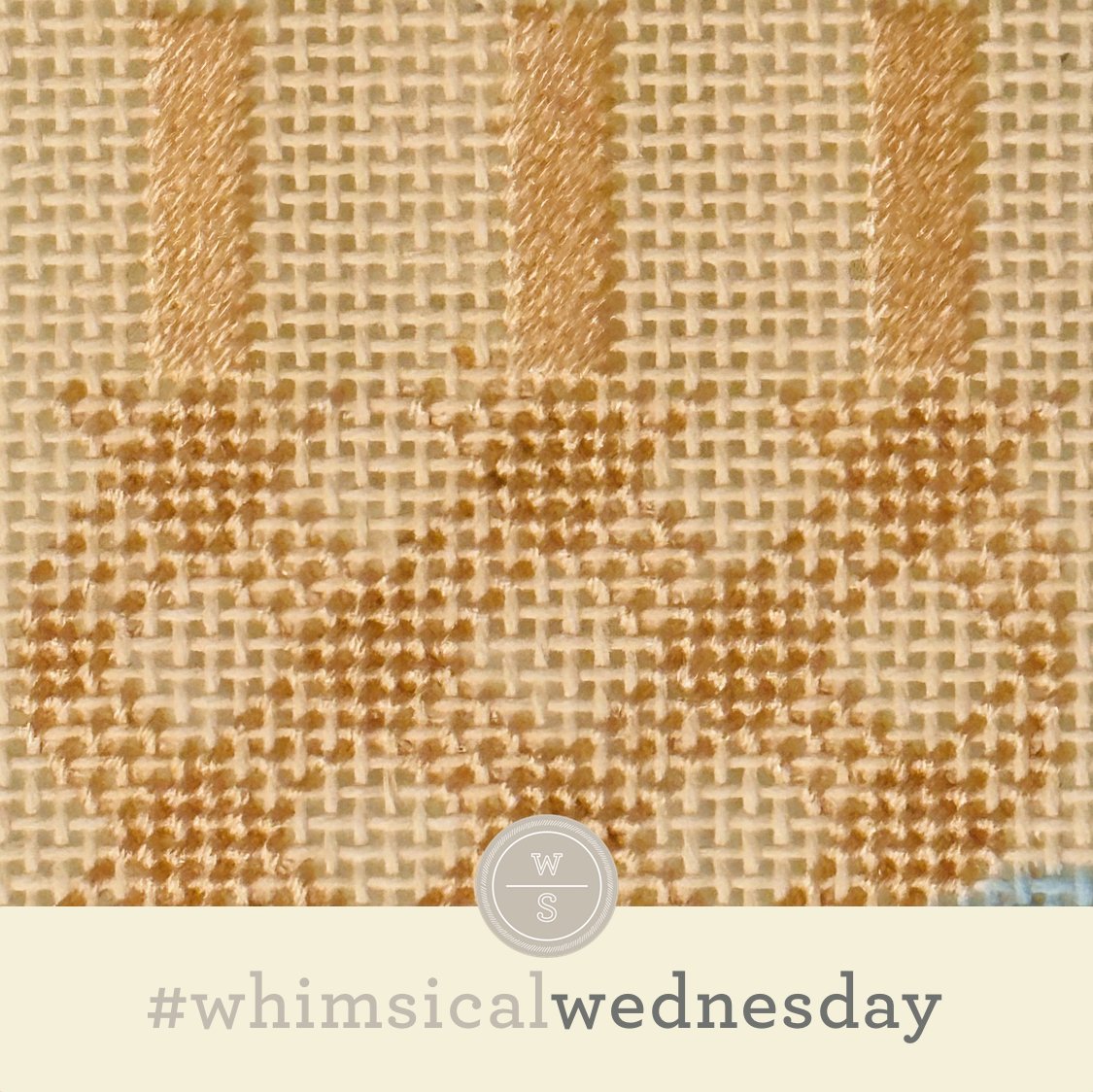I change my mind a lot…even when I’m thisclose to being done with a Stitch Concept. In this case, I’m really glad I stitched the answer to the nagging question, “What would happen if I stitched only half a gingham?”
Well, I love it! But first, a little about the diagram and the stitched sample. The diagram uses two colors in the open gingham area to help distinguish the two steps I use to create a gingham pattern. The stitched sample uses a single color of Soie D'Alger for the entire open gingham area. (I used two plies for the satin columns and three for the open gingham.) The pattern was created for a tabletop (open gingham) and a wall above it (satin columns).
This is the same gingham pattern from page 160 of book 3. However, I only stitched one color for both of the steps. The first step is to add three rows of tent stitches, following a diagonal path from upper right to lower left, leaving an empty row between the rows (tent stitches in black lines). Skip seven rows and repeat. When complete, return across the canvas from the upper left to lower right with the same pattern in the opposite direction.
The star of this show is the open gingham. It will make a great background for an ornament in virtually any of your favorite solid-color threads. I’m looking forward to using it on an otherwise simple shirt with a single strand silk (Vineyard. Silk or Pepper Pot Silk) or Elegance (a silk perle) to add some surprising and subtle interest. I’m also toying with using it for a larger window with a Petite Silk Lame or Kreinik Metallics Very Fine Braid #4.
Just a reminder about how to evaluate stitches for size on your project.
As you are auditioning stitches (from any stitch source), count the number of canvas threads on the diagram that match your mesh size. And there you have what an inch of the stitch will look like. Evaluate that against the area where you plan to use the stitch and make your final decision. If you start integrating this step into your stitch selection process, you may be surprised at how many stitches you think are large are much smaller than you realize. (Or, in today’s case, the stitch is much larger than it looks.)
By (sometimes) including this step in my own process, I find I am now integrating much longer stitches than I ever thought I would. I used to think a stitch six rows long was super big. I have very much changed my tune, which has helped me expand my creativity, especially for large-space stitches.
Today’s stitch diagram, along with all other #whimsicalwednesday and #smallspacesunday stitch diagrams, can also be found on a Pinterest board here. Be sure to follow whimsicalstitch.com on Facebook, Pinterest, Instagram, and Twitter.
If you like what you see on this blog, there's more. Mary’s Whimsical Stitches is a series of three books offering contemporary how-to collections of more than 250 stitches (in each volume) for all stitchers, regardless of skill level. All books include updated and sequenced diagrams from this blog plus a collection of all-new stitches from private lessons and other class projects. Visit here to find a needlepoint retailer that carries my books.
New to needlepoint or looking for a refresher? Please download a handy how-to guide covering basic needlepoint stitches and stitch compensation techniques along with new top-line information on needlepoint materials and tools, how to handle threads, and other helpful needlepoint resources.
whimsicalstitch.com also sells Stitch Guides and Stitch Concepts for Melissa Shirley Designs, Zecca Designs, Sandra Gilmore, Purple Palm, Maggie, and Penny MacLeod, and many more. Click here to see the newest guides and click here to see the entire collection.
I hope you have the perfect spot for this stitch! Please enjoy! Have a wonderful #whimsicalwednesday!
A Note about Diagrams
I use color in diagrams to make them as clear as possible. The primary function of different colored lines is to illustrate a stitch sequence. For example, the layering of colors demonstrates you add them in that order. They can also provide ideas on integrating additional threads (one line for each color). Or, you can use the same thread for all color lines. That's where I encourage you to use your imagination for the space you are stitching!




